Text

🏳️🌈2024 PRIDES 🏳️⚧️ BALCHDER 2024 🏴
Again, here's a schedule of the Prides that will be happening in Wales this year!
Eto, dyma amserlen o'r digwyddiadau Balchder yng Nghymru blwyddyn 'ma!
April/Ebrill:
20 April/Ebrill - Pride in Aberystwyth/Balchder yn Aberystwyth @prideinaber (Instagram, Facebook + https://www.prideinaber.co.uk/)
May/Mai:
12- Colwyn Bay Pride Bae Colwyn @togetherforcolwynbay
18 - Swansea Pride @swanseapride (Insta, FB + Twitter)
+18 -Balchder Machynlleth Pride @balchder_mach_pride (Insta + FB)
June/Mehefin:
1 - NPT Pride, Port Talbot @nptpride (Insta, Twitter + FB)
+1 - Torfaen, Pontypool Park https://www.torfaenpride.co.uk/
10 - Cowbridge Pride @cowbridgepride (Insta + FB)
13-16 - Pontardawe Pride @pontardawepride (Insta + FB)
15 - Barry Pride @barry.pride (Insta, Twitter + FB)
+15 Pride Caerffili @pridecaerffili (Insta + FB)
+15 Llandeilo Pride @llandeilo_pride (Insta + FB)
+15 Rhyl Pride, The Bodfor (The Bodfor FB)
22 - Big Queer Picnic @bigqueerpicnic (Insta, Twitter + FB)
+22 - Pride Cymru, Cardiff @lgbtpridecymru
+22 - Flint Pride (Flint Pride FB group)
23 - Ystrad Pride Picnic (Ystrad Pride FB)
29 - Abergavenny Pride @abergavennypride (Insta + FB)
July/Gorffennaf:
6 - Hay Pride @hay.pride https://www.haypride.com/
13 - Llanelli Pride @llanellipride (Insta + FB)
20 - Monmouth Pride Trefynwy @monmouth.pride.trefynwy (Insta + FB)
+20 - North Wales Pride Balchder Gogledd Cymru @northwalespride (Insta + FB)
+20 - Pembrokeshire Pride @pembspride (Insta + FB)
27 - Wrexham Pride Wrecsam (FB + Twitter)
+27 - Brecon Pride Balchder Aberhonddu @breconpride (Instagram)
August/Awst:
3 - Glitter Pride @glittercymru (Insta, Twitter, Facebook)
10 - Caldicot Pride @caldicotpride (Instagram)
17 - Merthyr Pride @merthyrpride (Insta, Twitter + FB)
23rd-25th - Cardiff Trans Pride @transpridecardiff (Insta, Twitter + FB)
September/Medi
7 September - Pride in the Port Newport @prideintheport.newport (Insta, Twitter, FB)
28 September - Tywyn Pride (Facebook)
TBA: Carmarthen Pride @carmarthenpride (FB + Insta)
Let me know if I've missed any! Do click through to the individual Prides' pages for more details - they also may need more support!
Gad i fi gwybod os mae unrhyw un ar goll! Ac edrychwch ar dudalennau'r digwyddiadau Balchder am fwy o fanylion - efallai mae angen cefnogaeth arnynt!
#pride#pride 2024#prides#resource#wales#welsh#cymru#cymraeg#lgbtqia#lgbt#lgbtq#lgbtqiap#so sorry I haven't posted anything in a while!#long post
12 notes
·
View notes
Photo
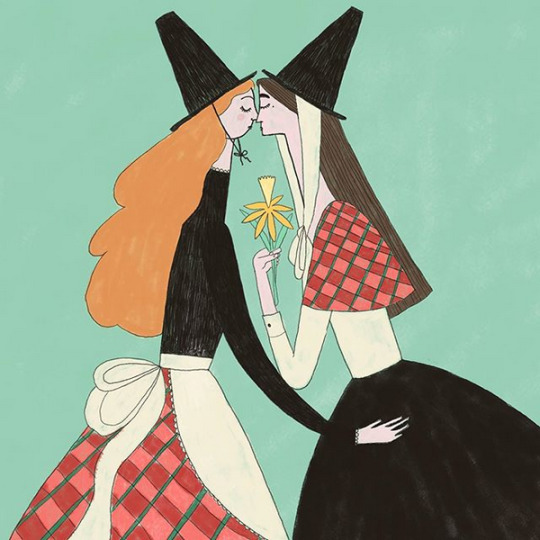
Efa G. Blosse Mason
59 notes
·
View notes
Photo
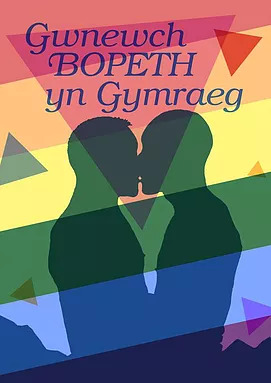

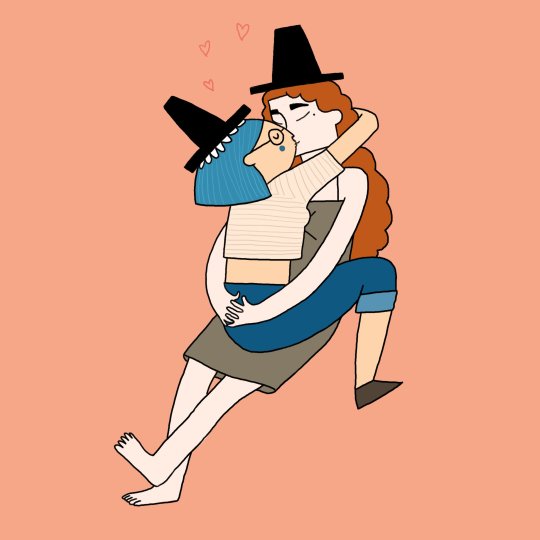
Dydd Santes Dwynwen Hapus! Dyma delweddau i gael dathliad bach LHDT+ o’r diwrnod cariadon Cymraeg.
Happy St. Dwynwen’s Day! Here are images I’ve seen and wanted to share to queerly celebrate the Welsh day of lovers.
1. Gwnewch Bopeth yn Gymraeg. (Do Everything in Welsh) O’r gylchlythyr ‘Draig Binc’ gan CYLCH, 1994, wedi liwio yn diweddaraf. From ‘Draig Binc’ (Pink Dragon), the newsletter of the Welsh gay group CYLCH, 1994, colourized later.
2. Llwy Caru / Welsh lovespoon. O’r Amgueddfa Genedlaethol - “Efallai taw enw'r gwneuthurwr oedd John, neu a gafodd ei wneud gan ddyn i ddangos ei gariad at ddyn arall?” From the National Museum of Wales - “Was the maker called John? Or was it made by a man to show his love for another man?” @museumwales
3. Efa G. Blosse-Mason. (Instagram) Gyda gymeriadau o’r ffilm fer ‘Cwch Deilen.’ With characters from her short film ‘Cwch Deilen’ (Leaf Boat).
116 notes
·
View notes
Photo

Queers Undermining Israeli Terrorism (Q.U.I.T.), San Francisco, [early 2000’s].
22K notes
·
View notes
Text
Trans Pride Cardiff and Carmarthen Pride are this weekend!
Pride in Wales! Balchder yng Nghymru!
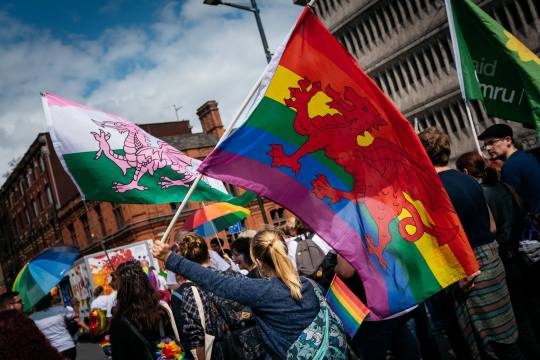
Here’s a list of the Pride events happening in Wales this year, in 2023. (click the links for more information)
Dyma rhestr o ddigwyddiadau Balchder yng Nghymru blwyddyn yma, yn 2023.
22 April/Ebrill - Aberystwyth Pride / Balchder yn Aberystwyth
29 April/Ebrill - Swansea Pride / Balchder Abertawe
30 April/Ebrill - Mini Pride and Swansea Anti-Capitalist Pride (1pm Singleton Park) / Balchder Bach a Balchder Gwrthgyfalafol Abertawe (1yp Parc Singleton)
14 May/Mai - Colwyn Bay Pride / Balchder Bae Colwyn
17 June/Mehefin - Hay Pride
17 June/Mehefin - The Big Queer Picnic
17-18 June/Mehefin - Cardiff Pride / Balchder Caerdydd (Pride Cymru)
Keep reading
#I will share more on both#possibly the last ones of 2023?#I am involved in Carmarthen Pride but will share more on Trans Pride also!
1K notes
·
View notes
Photo

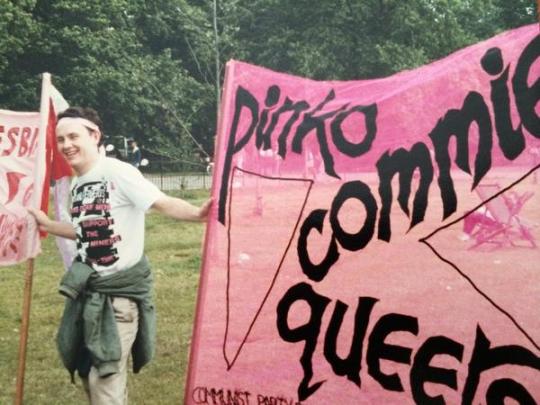
Mark Ashton died on this day, the 11th of February, in 1987.
Mark was born on the 19th of May, 1960 in Oldham, but grew up in Portrush, Northern Ireland. He moved to London in 1978, where he worked in a bar in King’s Cross, in drag as a barmaid with a blonde beehive.
In the 1980s, he volunteered for London Lesbian and Gay Switchboard, campaigned for CND and joined the Communist Party, becoming the first gay secretary of the Young Communist League. Though Mark transformed the Party’s approach to LGBT rights, he and Mike Jackson, who he’d met through Switchboard, wanted to be active as openly gay people. They formed Lesbians and Gays Support the Miners (LGSM) when they collected donations for miners on strike at 1984 Gay Pride.
In the evening of 1984 Pride, a miner spoke at a rally, and they were struck by the similarities between the two struggle, of LGBT rights and the Miners’ Strike. Having collected about £150, they advertised a meeting in Capital Gay. 11 people turned up and from the meeting they made a leaflet to launch LGSM - the leaflet was accepted except with an amendment to ‘one in ten miners is gay.’
As LGSM, they supported the miners as lesbian and gay people. At the second meeting, they decided to focus on one community, of the Dulais Valley, as one of the members, Hugh Williams, was from there. They then met David (Dai) Donovan, who also had thought through the similarities of their struggles and how LGSM could help. A month later, 27 lesbians and gay men, arrived at Onllwyn village in Dulais Valley.
Other than some hostility (and confusion towards vegetarianism), they experienced warmth, friendship and solidarity. LGSM raised £20,000 for families of miners on strike, and based on The Sun writing that “a group of perverts” were “supporting the pits,” they organised the Pits and Perverts concert in December, 1984, headlined by Bronski Beat. The miners marched with LGSM at Gay Pride in 1985.
Mark was admitted to hospital on 30th January, 1987, and died 12 days later from pneumonia, aged 26. At his memorial, there were banners from the Communist Party, Anti-Apartheid, anti-nuclear, Caribbean and community groups, as well as from LGSM. The Mark Ashton Trust was created to support individuals diagnosed with Aids; Mark is also remembered on the UK Aids Memorial Quilt and by Terrence Higgins Trust, with the Mark Ashton Red Ribbon Fund and a plaque at their London headquarters. In 2017, on what would have been his 57th birthday, he was honoured with a blue plaque above Gay’s The Word bookshop.
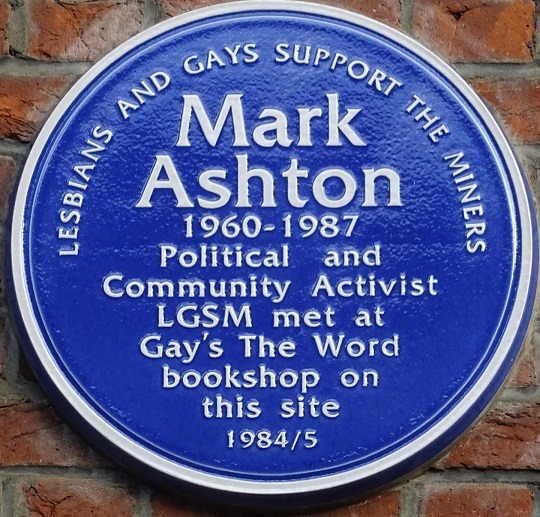
[Images: 1. Mark Ashton at Gay Pride 1981. 2. Mark Ashton at Gay Pride 1985, wearing a LGSM t-shirt and holding a pink “Communist Party” banner with the words “pinko commie queers.” 3. Blue plaque reading: “Lesbians and Gays Support the Miners. Mark Ashton 1960-1987. Political and Community Activist. LGSM met at Gay’s the Word bookship on this site 1984/5.”]
10K notes
·
View notes
Text

Gerard Manley Hopkins was born on the 28th of July, 1844 in Essex, to devout High Church Anglicans, who may have had Welsh roots (based on the surname Hopkins).
At Oxford, he became close to poet Robert Bridges and became estranged from his family due to his conversion to Catholicism. Gerard then became a Jesuit.
He continued his education at St Beuno's College in Denbighshire and started to more strongly identify with Wales. He wrote poems about Wales and Welsh identity and started to learn Welsh and of Welsh poetry such as the 'Cywydd' and 'Cynghanedd'. He left Wales when ordained to the priesthood.
Many of his poems also were homoerotic. It is thought some of these poems were inspired by, or directed towards, Digby Mackworth Dolben, another poet, who he seemed to have fallen in love with at Eton. Gerard was told by his Anglican confessor to stay away from Digby, who died a couple of years later from accidental drowning.
Digby was a 'Urainian poet,' a group of 'male homosexual poets' of the 19th and 20th century, and arguments have been made that Gerard should be included in this group. His sexually was however certainly repressed and he isolated himself at the end of his life.
Gerard suffered from ill health and so-called melancholia, which today some believe to have been bipolar disorder or major depression. His last words were "I am so happy, I am so happy."
Gerard Manley Hopkinds died of typhoid fever on the 8th of June, 1889, in Dublin, where he was buried in a Jesuit plot.
#gerard manley hopkins#history#queer history#gay history#queer welsh history#welsh history#uk history#pride#links#lgbtqia#m
23 notes
·
View notes
Photo


Penry Williams was a Welsh artist, known for painting industrial South Wales in his early life, and then life and national dress in Rome, who more recently is believed to have been in a relationship with Welsh sculptor John Gibson.
Born in Merthyr Tydfil in 1802, Penry’s father was a house painter and stone mason so Penry himself began painting from a young age. His school teacher, Taliesin Williams, encouraged his artistic talent, as he had had also done with other Merthyr artists. Penry painted pieces such as ‘The Merthyr Riots,’ ‘Cyfarthfa Ironworks Interior at Night’ and ‘South Wales Industrial Landscape’. With patrons such as William Crawshay and John Guest, Penry went to study in the schools of the Royal Academy.
In 1827, Penry moved to Rome, where he spent the rest of his life. He depicted scenes of Italian life, such as of ‘Italian Peasants’, as well as Italian landscapes. His studio became a tourist attraction, as was John Gibson’s sculpting studio.
Norena Shopland writes; ‘As with many people with forbidden lives there is little direct evidence to support claims that they two men had a relationship. However a close reading of accounts left by contemporaries provides enough circumstantial evidence to strongly support the relationship.’ (Forbidden Lives, 2017) When John Gibson died in 1866, he left £200 to Mary Charlotte Lloyd (fellow Welsh sculptor, who was partner to Frances Power Cobbe), a fund for the upkeep of his controversial ‘Tinted Venus’ and the rest of his estate he left to Penry.
Penry Williams died in Rome on the 27th of July, 1885.
Main images: ‘Fisher Boys’ and ‘The Tambourine’, mid 19th-century, National Museum Wales (@museumwales),
See more of Penry Williams’ art at: People’s Collection Wales, National Library of Wales (1822 Book of Drawings) and National Museum Wales.
98 notes
·
View notes
Photo
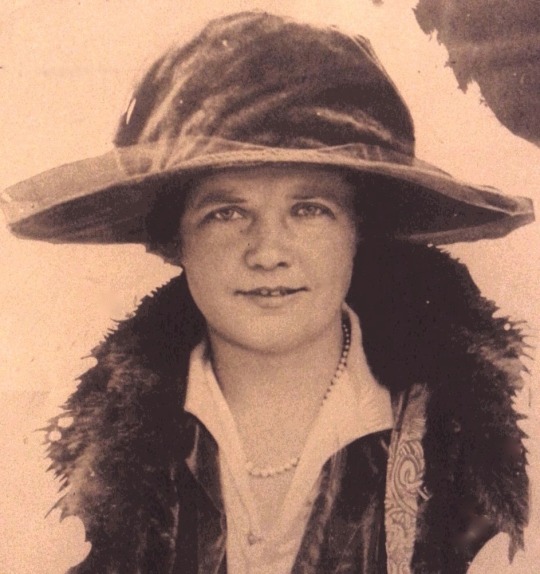

Margaret Haig Thomas, known as Lady Rhondda or 2nd Viscountess Rhondda, was born on the 12th of June, 1883, and died on the 20th of July, 1958.
Born in London as Margaret Haig Thomas, her father was politician David Alfred Thomas, the first Viscount Rhondda, and her mother was Sybil Thomas, a suffragette, who prayed that her daughter would become a feminist.
Margaret was raised at Llanwern House, near Newport, until she went to boarding school, and then Oxford, and she was an only child. She became a debutante, and worked for her father at Consolidated Cambrian in Cardiff.
In 1908, she joined the Women’s Social and Political Union (WSPU), becoming their Newport secretary, and married Newport landowner Humphrey Mackworth, becoming Margaret Haig Mackworth.
Margaret campaigned for suffrage across South Wales and in July 1913, attempted to destroy a Royal Mail postbox with a chemical bomb. After refusing to pay a £10 fine, she was sentence to one month in jail, in Usk. She went on hunger strike and was released after 5 days, receiving a Hunger Strike Medal.
On the 7th of May, 1915, travelling with her father and depressed over tensions in her marriage, she was on the RMS Lusitania when it was torpedoed. Though she suffered from hypothermia, she was rescued by an Irish trawler and recovered at home with her parents for months.
On the 3rd of July, 1918, Margaret’s father died and she became Viscountess Rhondda. She tried to take his seat in the House of Lords but was rejected. She also inherited his title as chair of his company, and was director of 33 companies in her lifetime, 28 of which she inherited from her father.
In 1920, Margaret founded ‘Time and Tide’ a left-wing feminist magazine, a mouthpiece for the Six Point Group, also set up by Margaret, to focus on equality and rights of children.
She divorced her husband in 1923 and lived with the first editor of ‘Time and Tide,’ Helen Archdale, and then had a relationship with author Winifred Holtby (who was in a relationship with Vera Brittain). Her partner of 25 years however was Theodora Bosanquet.
After her death in 1958, women soon were allowed to enter the House of Lords, and Time and Tide continued to run until 1970.
Margaret is pictured and named as ‘Margaret Haig Viscountess Rhondda (1883-1958)’ on the plinth of the statue of Millicent Fawcett in London. There is also a campaign for a statue of Lady Rhondda in Newport.
Further reading: Angela V. John, Turning the Tide: The Life of Lady Rhondda, Cardigan, Parthian Press, 2014.
53 notes
·
View notes
Text
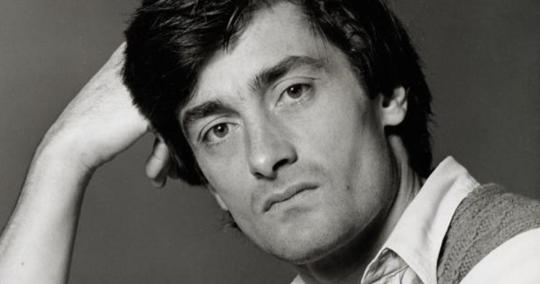
Roger Rees was born on the 5th of May, 1944 in Aberystwyth, to William John and Doris Louise Rees (née Smith). They later all moved to Balham, London.
After studying art at Camberwell College of Arts and Slade School of Fine Art, Roger fell into theatre acting and became a successful stage actor, joining the RSC.
Roger won an Olivier Award for 'Actor of the Year in a New Play' in 1980 and a Tony Award for Best Actor in 1982 for his leading role in The Life and Adventures of Nicholas Nickleby, an 8 and a half hour long adaptation of the Dickens novel by David Edgar.
Following his successes on the stage, Roger became well-known for his TV roles, especially in Cheers from 1989. He also later appeared in The West Wing, Grey's Anatomy, Law & Order, Elementary and more.
He was also a film actor, with his most well-known role being the Sheriff of Rottingham in Robin Hood: Men in Tights. Other films he appeared in included Stop! Or My Mom Will Shoot, A Midsummer Night's Dream and Frida.
He lived in the US for 25 years and married his partner of 33 years, playwright Rick Elice, in 2011, when it became legal in New York. Roger was also a convert to Judaism.
Roger Rees died from brain cancer on the 10th of July, 2015, aged 71. Posthumously, he was inducted to the American Theater Hall of Fame.
#roger rees#rick elice#history#gay history#lgbtq#lgbtq+#lgbtqia#lgbtq history#queer history#cheers#wales#welsh history#on this day#otd#m#died on this day#queer welsh history#elementary#robin hood men in tights
55 notes
·
View notes
Photo
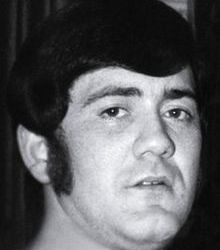
Terrence ‘Terry’ Higgins was born on the 10th of June, 1945, in Haverfordwest, Pembrokeshire, Wales, where he left as a teenager because of his sexuality. He worked in London as a reporter in the House of Commons, a nightclub barman and travelled to Amsterdam and the USA as a DJ. He was working when he collapsed at the Heaven nightclub in London.
Terry died on the 4th of July, 1982. He was one of the first people in the UK to die of an Aids-related illness, at the age of 37. The 10th of June, 2019, would have been his 74th birthday.
The Terry Higgins Trust was started in 1982 by Terry’s partner Rupert Whitaker, and Terry’s friends Martyn Butler, Tony Calvert, Lee Robinson and Chris Peel. In 1983 it formally became the Terrence Higgins Trust, ‘the first charity in the UK to be set up in response to the HIV epidemic.’ It remains the leading HIV and Aids charity in the UK and the larget in Europe.
The Terrence Higgins Trust: Website and Twitter.
90 notes
·
View notes
Text
Added Carmarthen Pride!
Pride in Wales! Balchder yng Nghymru!

Here’s a list of the Pride events happening in Wales this year, in 2023. (click the links for more information)
Dyma rhestr o ddigwyddiadau Balchder yng Nghymru blwyddyn yma, yn 2023.
22 April/Ebrill - Aberystwyth Pride / Balchder yn Aberystwyth
29 April/Ebrill - Swansea Pride / Balchder Abertawe
30 April/Ebrill - Mini Pride and Swansea Anti-Capitalist Pride (1pm Singleton Park) / Balchder Bach a Balchder Gwrthgyfalafol Abertawe (1yp Parc Singleton)
14 May/Mai - Colwyn Bay Pride / Balchder Bae Colwyn
17 June/Mehefin - Hay Pride
17 June/Mehefin - The Big Queer Picnic
17-18 June/Mehefin - Cardiff Pride / Balchder Caerdydd (Pride Cymru)
Keep reading
1K notes
·
View notes
Photo
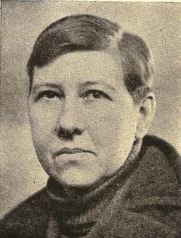

Kathleen Freeman was born on the 22nd of June, 1897, in Yardley, Birmingham. By 1911, she and her parents, Charles H Freeman, a commercial traveller, and Catherine Freeman (née Mawdesley) had moved to Conway Road, Cardiff. Kathleen attended Canton High School and University of South Wales and Monmouthshire (Cardiff University).
After graduating with a BA in Classics, Kathleen stayed on at the University as a Greek lecturer, being awarded an MA and D.Litt. During the Second World War, she lectured for the Ministry of Information and HM Forces in South Wales. In 1946, having become a senior lecturer, she resigned from Cardiff University to focus on her writing and research.
As well as publishing academic texts on Classics and Greek translations, Kathleen was a mystery and detective writer. She was admitted into the Detection Club in 1951, a group of mystery writes which included Agatha Christie. Mary Fitt was her most used and well-known pseudonym, under which she published 27 novels and short stories from 1936, but she also wrote as Stuart Mary Wick, Clare St Donat, Caroline Cory and ‘T’other Jane Austen.’
From the 1930s until her death on the 21st of February 1959, Kathleen lived with her partner Dr Liliane Clopet, a GP and writer, at Lark Ride, Druidstone Road, St. Mellons (outside Cardiff). Several of her books were dedicated to Liliane. Liliane died in Newport in 1987, aged 86.
Sources:
‘FREEMAN, KATHLEEN (‘Mary Fitt’; 1897 - 1959), classical scholar and writer,’ The Welsh Biography
‘Inspirational People: 3. Kathleen Freeman – Classicist and Fiction Writer,’ Judith Dray, Cardiff University Blogs
‘How to Conceal a Female Scholar; or, the Invisible Classicist of Cardiff,’ Edith Hall, The Edithorial
Kathleen Freeman, A Brief Biography & Bibliography, M. Eleanor Irwin, University of Toronto
48 notes
·
View notes
Photo

Gwen John was born Gwendolen Mary John on the 22nd of June, 1876, one of four children of Edwin William John and Augusta John (née Smith). Gwen was 8 years old when Augusta passed away, when her family then moved from Haverfordwest to Tenby, where they would often sketch the Pembrokeshire coast.
Her earliest surviving works are from when she was 19, when she began to study at the only art school in the UK that would take female students, Slade School of Art. She developed a relationship with artist Ambrose McEvoy (a portrait by him of Gwen survives), but she also had a relationship with another woman at Slade - her identity is unknown but the relationship was known to Gwen’s brother to be so intense that the woman’s ‘love’ for Gwen ‘turned to hate’.
Gwen won the Melville Nettleship Prize for Figure Composition at Slade, and first visited Paris in 1898, studying under Whistler. She exhibited in London when she returned in 1899, living very poorly, before returning to France in 1903. Gwen was an artist’s model in Paris in 1904, including for Rodin, who she developed a relationship with - she was devoted to him for the next decade.
Despite the famous European artists Gwen met, she preferred to work in solitude. She could afford to work independently and no longer work as a model when patroned by John Quinn from 1911. She continued to exhibit but could be too perfectionist to complete some works. After the end of her relationship with Rodin, Gwen became increasingly Catholic.
Of course, she also lived in solitude, except for her cats. She possibly remained living in France to avoid personal relationships, like with her family. However, she still developed feelings and relationships in France that could be intense and sometimes one-sided.
It is certainly known that Gwen was attracted to men and women, and was likely bisexual. Rodin drew Gwen erotically with Hilda Flodin, his assistant who he also had a sexual relationship with, but Gwen’s own main subjects in her work are women (and cats). Certainly it’s possible to see Gwen’s interest in women in her paintings of various women, whether or not she had relationships with those women.
As well as the women already mentioned, Gwen also was infatuated with another unnamed woman, a married woman in France, and German artist Ida Gerhardi herself was infatuated with Gwen. This was unrequited, as was Gwen’s most intense infatuation with Véra Oumançoff. Gwen wrote 2000 letters to Rodin, especially when she could not get his undivided attention in person, telling him of different aspects of her day and her life. He died in 1917 and it was in 1926 she developed an attachment to Véra, who she also wrote letters to, some (but not many) of which survive at the National Library of Wales. Though these aren’t many, in one of them, Véra asks Gwen whether she needs to write to her every day.
“I don’t think so,” Véra wrote, in French, “- and I even think that it is bad for your soul - for you are too attached to a creature, without ever knowning it, so to speak. I am well aware that you have great sensitivity, but you must direct it towards Our Lord, towards the Blessed Virgin.”
Gwen also sent Véra about 100 drawings, which were discovered in a cupboard after Véra’s death in 1959. This one-sided relationship ended in 1930 as Véra’s family wanted to concentrate on prayer.
By 1933, Gwen had stopped painting, and lived the end of her life in isolation, leaving to Dieppe in 1939, with a will and burial instruction, and dying in a public hospital there on the 18th of September.
The grave was unknown until it was found that Gwen had been buried as ‘Mary John’ in a Dieppe Cemetary, in the 2015 S4C documentary Mamwlad, presented by Ffion Hague. A memorial plaque was added in Dieppe in 2015, finally marking the rest place and celebrating one of the most famous artists from Wales - or perhaps even the most famous artist from Wales, and not just the most famous female artists from Wales either. (Though of course how Welsh her identity was can be also debated.) As she is herself more recognised, rather than just her associations with men, her bisexuality also is increasingly recognised, and perhaps Gwen John is also better understood.
The plaque is inscribed with a quote from a letter of Gwen’s:
Mae pobl fel cysgodion i mi ac fel cysgod ydwyf innau.
(People are like shadows to me and like a shadow I am to them.)
Sources & Further Reading:
Gwen John Self-Portrait.
Gwen John sources at National Library of Wales.
Ceridwen Morgan-Lloyd, Gwen John: Letters and Notebooks
National @museumwales blog ‘LGBT Figures from Welsh History.’
Norena Shopland, Forbidden Lives: LGBT Stories from Wales, 2017.
130 notes
·
View notes
Photo
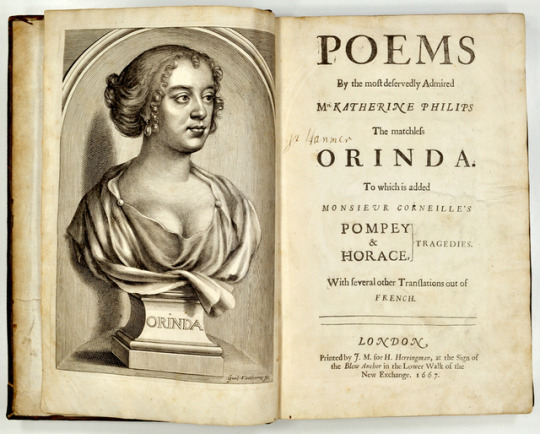
Katherine Philips was known as the “Matchless Orinda,” or sometimes, the “Welsh Sappho”. Born Katherine Fowler in London in 1632 to a wealthy family, she was an intelligent child - could read and write from a young age, learned the Bible and several languages, and was even sent to school.
One of Katherine’s closest friends at school was Mary Aubrey, who would become ‘Rosania’ in Katherine’s poetry - some of the earliest romantic friendship poetry known of in Britain. This was perhaps when Katherine began her ‘Society of Friendship.’
Katherine’s father died when she was 10 years old and when her mother remarried, they moved to Wales. Katherine herself got married at about 17 years of age, to a distant cousin James Philipps, who was certainly older, though there is debate around his age, which may have been mid-20s, or mid-50s. This was shortly afted Katherine penned the poem “A Marry’d State,” which was certainly critical of marriage.
She then moved to Cardigan Priory, which became central to her ‘Society of Friendship,’ where she, ‘Orinda,’ wrote poetry to other women, and was herself admired by women in poetry, as the ‘Matchless Orinda’. As Katherine lived between London and Wales, perhaps rural life in Wales more isolated and lonely, she expanded her Society of Friendship, taking on new members such as Anne Owen from Pembrokeshire, who was known in Katherine’s poetry as “Lucasia”.
Katherine’s relationship with Mary Aubrey ended bitterly when she didn’t invite Katherine to her wedding, perhaps because of Katherine’s intense poetry (it’s difficult to know what Mary’s reaction would have been as her responses don’t survive), Katherine wrote ‘On Rosania’s Apostacy, and Lucasia’s Friendship.’ This made clear her feelings for Lucasia, as did ‘To My Excellent Lucasia on our Friendship’ and ‘To my Lucasia, in Defence of Declared Friendship.’ This relationship ended when Anne Owen remarried in 1663. Before her death, Katherine also wrote poetry to ‘Berenice,’ whose identity is unknown.
Katherine’s sexuality and the nature of her poetry has been debated, but it is clear that Katherine shared romantic relationships with women, and had strong feelings for them, which survive in her poetry. She herself mentioned Sappho in her poems and was compared to Sappho after her death.
Katherine died of smallpox on the 22nd of June, 1664, only 32 years old, in Rosania’s arms in London. Katherine was survived by 1 daughter, who she’d named Katherine, and also had 1 son with James, Hector, who had not survived. Though her poetry was published posthumously, Katherine became obscured, but has been appreciated again since the 20th century, as one of the first British female poets to be celebrated in her own lifetime, as well as one of the first British poets to write romantic friendship poems.
Katherine Philips can certainly be appreciated as an acclaimed Anglo-Welsh poet who was highly influential in her writing of female same-sex love. Katherine’s poetry certainly mostly focussed on women and, as her Society of Friendship was influential to women in her lifetime, at least 2 of which she had passionate relationships with, Katherine continued to be an inspiration to other woman poets after her death.
Sources & Further Reading:
Katherine Philips Manuscript c. 1655 on People’s Collection Wales.
Katherine Philips, National Library of Wales.
Katherine Philips poems held by the British Library.
Some more biography on Poetry Foundation.
Norena Shopland, Forbidden Lives: LGBT Stories from Wales, 2017.
See more sources from Oxford DNB.
63 notes
·
View notes
Text
There are reports that the Government is planning to introduce guidance stating that schools in England must inform parents if a young person seeks to change their name or starts wearing different uniform. We believe this information should be kept confidential, unless the child chooses to share it.
888 notes
·
View notes
Photo

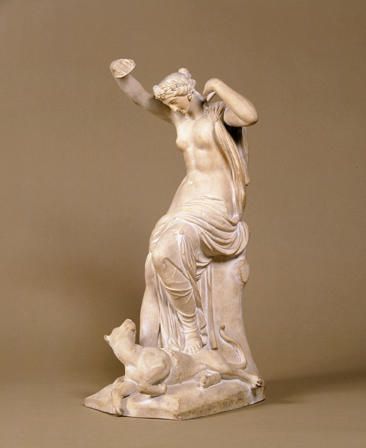
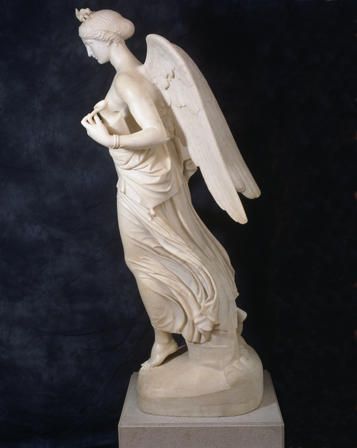

Sculptures by John Gibson at the National Museum of Wales, Cardiff; ‘The Wounded Amazon,’ ‘A Bacchante diverting the Attention of a Tiger,’ ‘Aurora,’ and ‘Nymph and Cupid.’ @museumwales
John Gibson was born on the 19th of June, 1790 in Conwy and died in Rome on the 27th of January, 1866. Welsh lesbian sculptor Mary Charlotte Lloyd and the American lesbian sculptor, Harriet Hosmer both studied at Gibson’s studio in Via della Fontanella, which was also a tourist spot for a number of other lesbian and feminist women.
John Gibson is thought to have had a relationship in Rome, until his death, with the Welsh artist Penry Williams.
69 notes
·
View notes